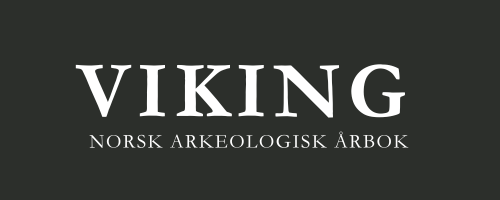Rune Carvers in Military Campaigns
DOI:
https://doi.org/10.5617/viking.9058Abstract
Runic inscriptions, such as those found in the probable Varangian contexts of Hagia Sofia and Piraeus, as well as on the Black Sea island of Berezan, where the origin of the carver is less obvious, show that some of the Scandinavians in such contexts knew how to write runes. Domestic Scandinavian runestones also display traces of martial activities, as in the inscription about the carver Ulfr, who participated in the taking of giald in England. In addition, a number of objects inscribed with runes have been found in the Garrison at Birka. Previously, runestones have figured in debates regarding conflict, tribute, and political expansion within Scandinavia. One of the questions that has been addressed deals with runestones in certain parts of Scandinavia – Bornholm, Gotland and Öland – and whether they were produced by locals, or by carvers from other parts of Scandinavia. Runestone characteristics that were earlier attributed to mainland Swedish influences on Gotland and Bornholm can in fact also be dependent on chronology, or be seen as regional eastern Scandinavian features. One of my queries has been whether it is possible to reach a more profound understanding of such phenomenon by analysing carving techniques, since my results indicate that some runestones on these islands were produced by travelling and visiting carvers, and could be indicators of the status of cross-regional relationships.
Downloads
Published
Issue
Section
License
Fra og med årgang 2016 er innhold i tidsskriftet Viking - dersom ikke annet er uttrykt - lisensiert gjennom Creative Commons Lisens BY-NC-ND-4.0. Dette betyr at innhold kan kopieres, distribueres og spres i hvilket som helst medium eller format, så lenge disse vilkårene er fulgt.



